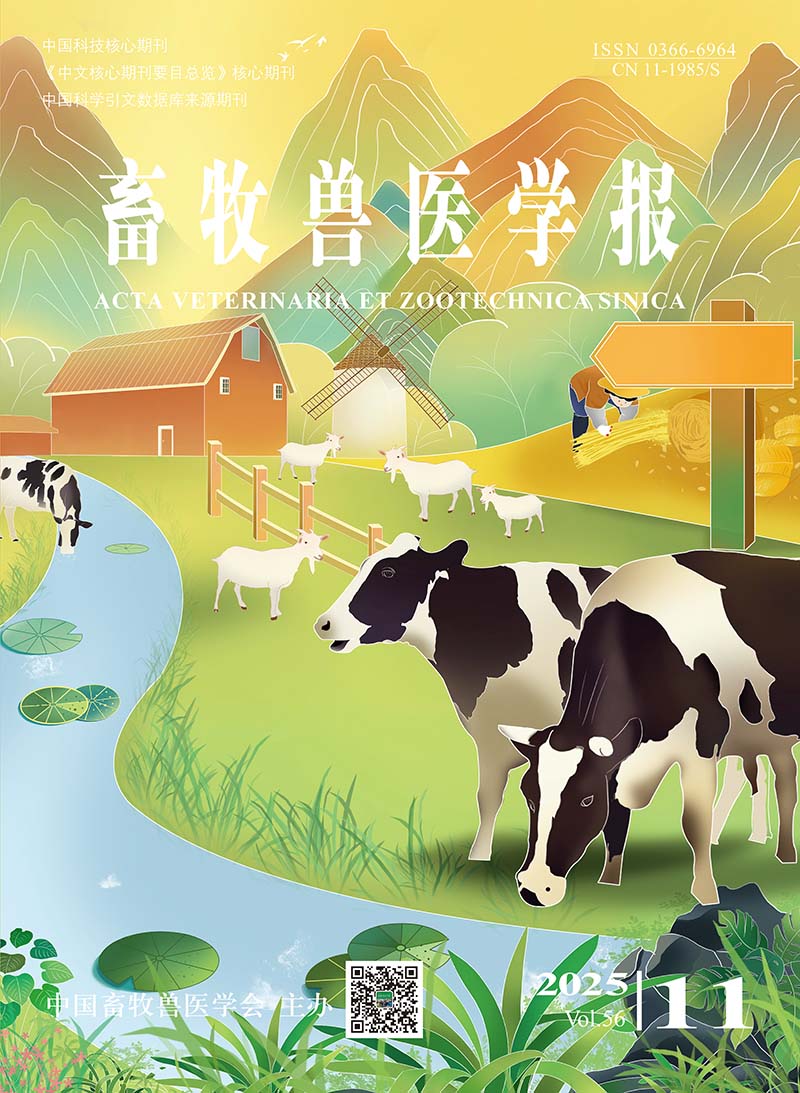-
Phylogenetic Clustering, Serotype and Drug Resistance Analysis of Escherichia coli from Diarrhea with Piglets in Xinjiang
- TONG Panpan, HUANG Shunmin, WANG Yudan, SHI Xuhui, CHEN Wenxia, SONG Xinlong, ZHANG Yi, SU Zhanqiang, XIE Jinxin
-
2023, 54(1):
414-420.
doi:10.11843/j.issn.0366-6964.2023.01.038
-
 Abstract
(
301 )
Abstract
(
301 )
 HTML( )
HTML( )
 PDF (1412KB)
(
604
)
PDF (1412KB)
(
604
)
-
References |
Related Articles |
Metrics
This study was conducted to examine the distribution of phylogenetic clustering, virulence genes, serotypes and drug resistance of Escherichia coli (E. coli) from diarrhea with piglets in Xinjiang. In this study, 154 fecal samples were collected from diarrhea with piglets, and isolation, identification of E. coli was conducted. Phylogenetic clustering, virulence genes, serotype were tested by multiple PCR method. Drug sensitivity of isolates was determined by using a Kirby-Bauer disk diffusion method and drug resistance gene was detected by PCR. The results showed that 154 E. coli were isolated, including ETEC (n=24), STEC (n=21), EPEC (n=1), EPEC/STEC (n=2), ETEC/STEC (n=1), ETEC/EPEC (n=1), and other 104 strains. Phylotyping assays showed that most strains largely belong to group A (37%) and B1 (31%). O serogroups were identified for 44 E. coli isolates, of which O154, O12, O8, O141 and O175 were dominant serogroups. One hundred and fifty-one strains were multiple drug resistance (MDR), and the drug resistance rates of 154 E. coli isolates to cotrimoxazole, tetracycline, ampicillin, streptomycin and chloramphenicol ranged from 81% to 100%, that to amoxicillin/clavulanate, cefotaxime, gentamicin, ceftriaxone, ciprofloxacin and amikacin ranged from 31% to 66%, that to levofloxacin, polymyxins B, ceftazidime, cefepime, ampicillin -sulbactam, piperacillin -tazobactam and imipenem ranged from 1% to 19%. The prevalence of drug resistance genes tetA (88%), tetG (60%) and cmlA (45%) was higher, while blaCTX-M-2G, blaTEM, blaSHVand tetE were all lower than 30%. blaCTX-M-2G, blaTEM, blaSHV and tetE were not detected. The results indicated that the types of E. coli from diarrhea with piglets in Xinjiang were complex and the situation of MDR was severe, the prevalence of drug resistance genes was diversified, and important antibiotic resistance phenotypes were detected in human and clinical, so the monitoring of drug resistance of E. coli in pig farms should be strengthened.






